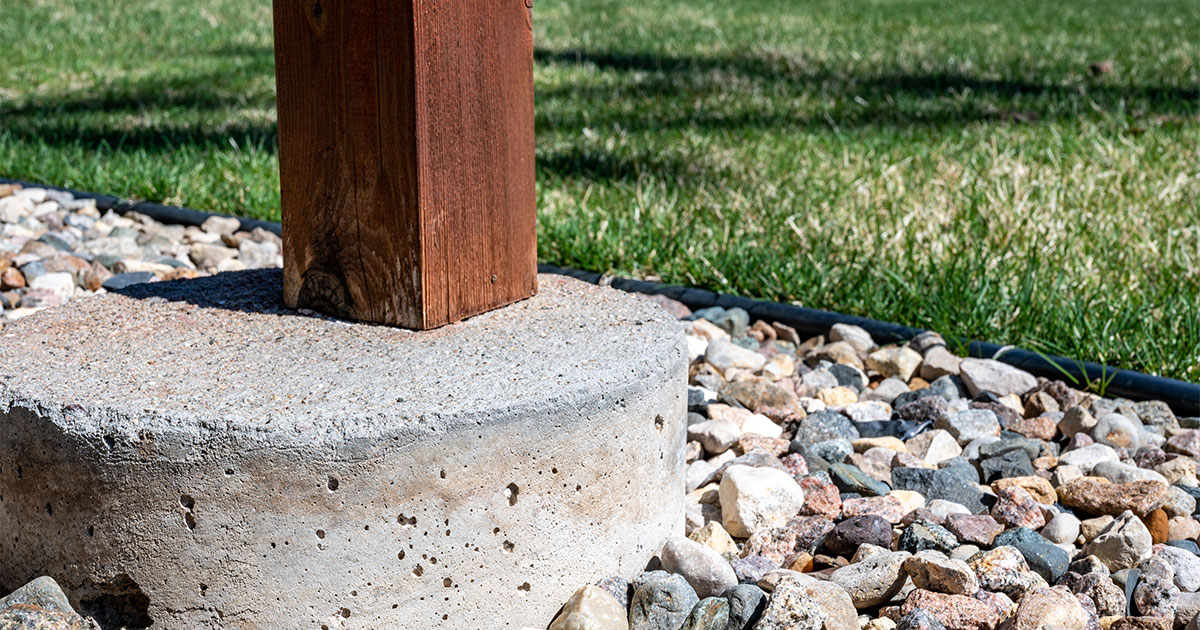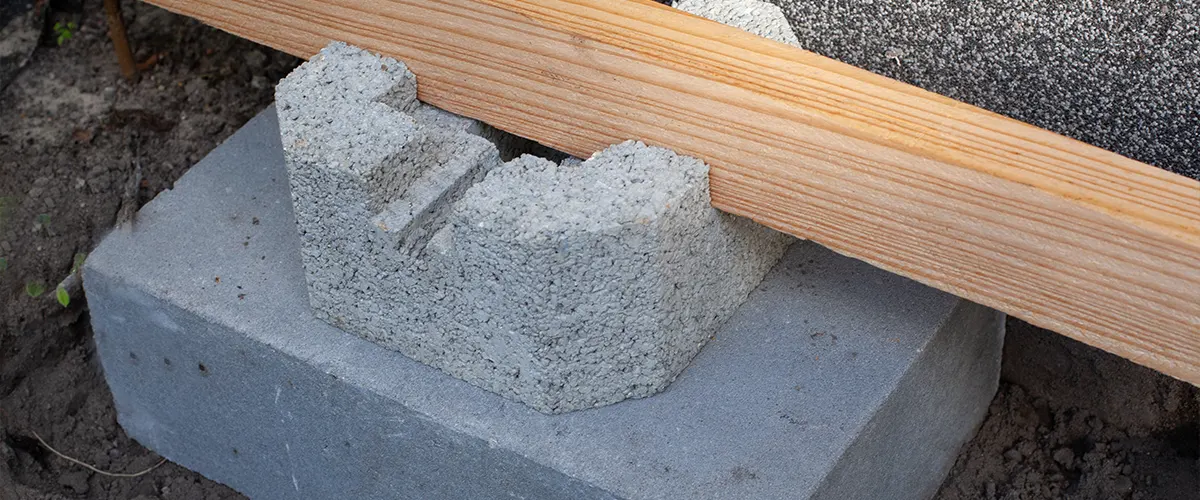Building a Strong Foundation: Unveiling the Tricks of Deck Ground
When it comes to developing a deck, one important aspect that frequently goes forgotten is the structure or ground. A solid and properly designed deck footing is vital for the security and longevity of any kind of deck structure. In this informative guide, labelled "Building a Strong Structure: Introducing the Secrets of Deck Ground," we will explore the significance of proper grounds, the different types available, and the elements to take into consideration when choosing the ideal ones for your deck project. Additionally, we will certainly provide step-by-step instructions on just how to prepare and install grounds appropriately. We will certainly discuss the relevance of normal upkeep and examination to make sure the ongoing security and toughness of your deck grounds. Join us as we discover the keys to building a dependable deck foundation.
Value of Proper Footings

One of the primary reasons that proper footings are critical is to avoid the deck from sinking or moving. Grounds that are not deep sufficient or are badly created can create the deck to clear up erratically or shift over time. This can cause an uneven deck surface, causing a stumbling danger and endangering the architectural stability of the whole deck.

Furthermore, proper footings likewise help to secure the deck from dampness damage. By boosting the deck framework in the air, footings avoid the wood from coming into direct call with wetness, reducing the danger of rot and degeneration.
Kinds Of Deck Footings
The option of appropriate deck grounds is an essential facet in making sure the security and longevity of a deck structure. There are numerous kinds of deck grounds that can be utilized, each with its very own advantages and factors to consider.
One common kind of deck ground is the concrete pier ground. This involves excavating holes in the ground and pouring concrete to produce a solid structure for the deck. Concrete piers are functional and can be made use of in a variety of dirt conditions, making them a popular option for several deck jobs.
An additional option is the helical pier ground. This kind of footing is composed of a steel shaft with helical plates that are screwed into the ground.
For decks developed on shallow or level foundations, a shallow ground might be suitable. Superficial grounds are normally made of concrete and are placed straight on the ground surface. They are best suited for smaller decks or areas with secure dirt conditions.
Factors to Take Into Consideration When Picking Footings
When selecting grounds for a deck, it is very important to meticulously consider several factors that will inevitably identify the stability and longevity of the structure. The initial variable to think about is the type of dirt on which the deck will be constructed. Various soil types have varying load-bearing abilities, so it is important to evaluate the soil's capacity to sustain the weight of the deck. On top of that, the environment of the region should also be considered. Severe climate condition, such as hefty rains or freezing temperatures, can affect the ground and potentially cause movement look at this now or changing of the grounds. One more vital element is the dimension and elevation of the deck. Bigger decks with hefty tons or multiple levels need more significant grounds to give adequate assistance. Additionally, the materials made use of for the grounds must be picked sensibly. Typical options include concrete, helical heaps, and sonotubes. Each product has its benefits and downsides, so it is important to take into consideration variables such as cost, simplicity of installation, and maintenance demands. Seeking advice from with an expert engineer or contractor can guarantee and give important insights that the selected footings meet local structure codes and regulations. By very carefully taking into consideration these aspects, home owners can make informed choices when picking footings for their deck, making sure a secure and resilient structure.
Steps to Prepare and Install Grounds
To prepare and install grounds for a deck, it is vital to adhere to an organized technique that ensures security and longevity. The very first action is to determine the size and number of footings required based on the deck layout and local building codes. By adhering to these actions thoroughly, one can ensure that the footings are properly prepared and set up, giving a strong foundation for the deck structure.
Maintenance and Assessment of Deck Footings
To make sure the long-term stability and security of your deck, regular upkeep and detailed examinations of the deck footings are vital. The deck grounds serve as the structure of your deck, sustaining the weight and tons of the whole structure.
Routine maintenance should include visual assessments of the grounds, looking for indicators of damages or degeneration. These can include cracks, moving or sinking of the footings, or indications of water damages. Additionally, it is crucial to inspect the stability of the footings by using pressure or carrying out load tests visit their website if necessary.
In addition to visual examinations, it is advised to set up expert assessments every couple of years. Professionals can evaluate the structural integrity of the grounds much more properly and supply experienced guidance on any type of needed repair work or replacements.
Moreover, appropriate maintenance also involves taking preventative actions to secure the footings (Deck Footings). This can include applying water-proof finishings to stop water damage, ensuring appropriate drain to stay clear of extreme dampness, and regular cleaning to remove debris and stop build-up
Verdict
Finally, correct deck footings play a crucial role in ensuring the security and durability of a deck. By comprehending the different sorts of footings offered and thinking about variables such as dirt conditions and neighborhood building regulations, property owners can make informed decisions when selecting grounds for their deck. In addition, normal maintenance and evaluation of deck grounds is crucial to identify any kind of prospective problems and guarantee the safety of the framework.
In this useful overview, titled "Building a Strong Foundation: Unveiling the Tricks of Deck Ground," we will certainly discover the significance of correct grounds, the different types available, and the aspects to consider when picking the appropriate ones for your deck task.One usual type of deck footing is the concrete pier footing.To make certain the long-term security and security of your deck, regular maintenance and complete my latest blog post inspections of the deck footings are important.In final thought, appropriate deck grounds play an essential role in ensuring the security and durability of a deck. By comprehending the various kinds of footings available and taking into consideration aspects such as soil problems and neighborhood building codes, homeowners can make informed choices when choosing grounds for their deck.
Comments on “The Value of Appropriate Deck Footings: A Detailed Installment Tutorial”